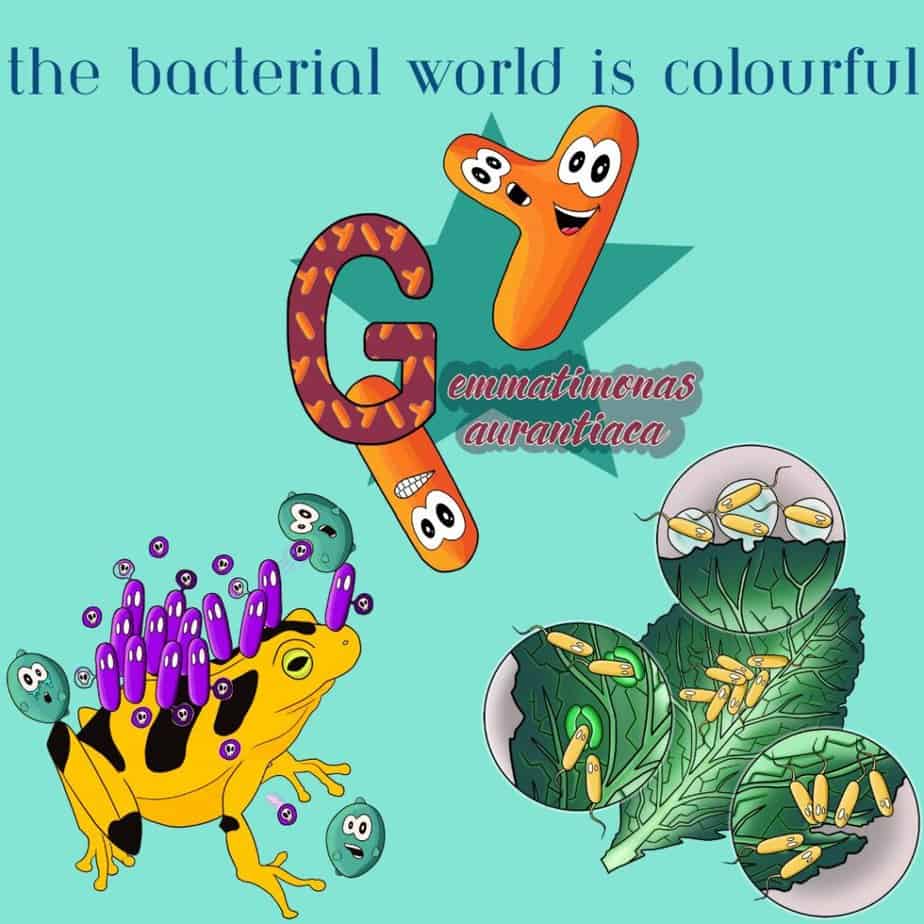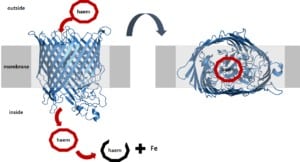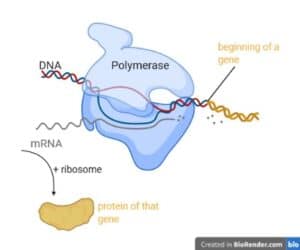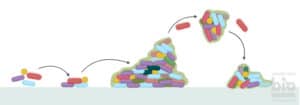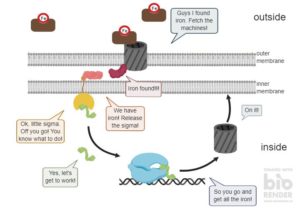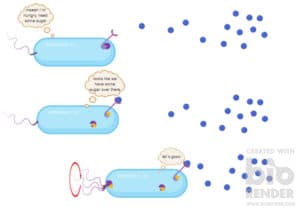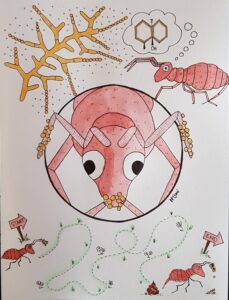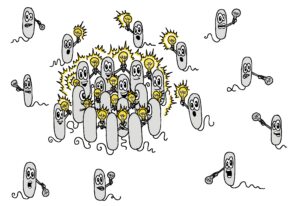The world around us is colourful. Wherever you look, you see various colours of different shades and hues.
And only thanks to pigments, life on Earth is possible. Pigments were the first molecules that microbes used to harvest sunlight. Microbes could then transform the light energy into chemical energy and produce oxygen.
Even the brown-reddish haemoglobin in your blood is an essential pigment as it transports oxygen within your body. Also for bacteria, pigments and their colours have life-saving functions. Here, we will look at how biopigments colour the bacterial world and what bacteria gain from producing them.
Bacterial pigments bring colour to the world of bacteria
Biopigments are molecules with complex chemical structures and at least one excited electron. Depending on the electron’s arrangement, a pigment absorbs light at a specific wavelength. It reflects the colour of the unabsorbed wavelength, which gives the pigment its colour.
As the function of pigments depends on the incoming light, sunlight plays a crucial role for bacteria with pigments. By adding certain pigments to their membrane, bacteria can adapt to environments that are directly affected by sunlight or the lack of it. This gives them an advantage over those bacteria that lack these pigments.
However, some bacteria also use pigments for other purposes, which we discuss further in this article.
Microbes harness photosynthetic power with colourful pigments
Sunlight is incredibly powerful since each light photon contains energy. Bacteria adapted to harvest energy from sunlight with special pigments.
Pigments can capture the incoming photon and transfer its energy to other molecules. This process transforms the incoming light energy into chemical energy. So-called phototrophic microbes are those that gain their energy from light.
The best-known example of a photosynthetic biopigment is chlorophyll in plants, algae and cyanobacteria. Cyanobacteria produce several complexes of bacteriochlorophylls to absorb blue and red light. As the green light is not absorbed, it is reflected, which is why chlorophyll – and thus cyanobacteria, algae and plants – are green.
Some bacteria harvest more light by producing several pigments of different types. They then arrange them in an optimal formation according to the incoming light.
For example, carotenoids capture energy in the green-blueish range and pass it on to the associated chlorophyll. Together, these photosynthetic complexes absorb light energy from almost the entire wavelength spectrum.
Halophilic bacteria and archaea are microbes that produce carotenoids to capture sunlight. You may have seen salt ponds with a reddish colour. This comes from the red and pink-coloured archaea Halobacteria, bacteria Salinibacter or algae Dunaliella. Thanks to their colourful carotenoids, these microbes adapt to salty waters that are exposed to direct sunlight.
Cyanobacteria in the deep sea, lagoons, lakes, ponds or rivers produce similar molecules to chlorophyll. These absorb the blue-green light in water, which allows these bacteria to survive in these dark environments. If you have ever seen a lagoon shining yellow or orange, this was probably due to the colourful cyanobacteria inside.
Bacterial biopigments protect from too much light
As light is full of energy, bacteria also need to protect themselves from getting burned. For this, they produce pigments that take up the excess light energy. Like this, the main photosynthetic complex does not get damaged.
Carotenoids and xanthomonadins are the colourful sun blockers of the microbial world. These molecules absorb high-energy light to protect chlorophyll from damage. Over 600 different carotenoids were described and they usually come in yellow-orange-reddish colours.
The yellow xanthomonadins absorb wavelengths within the energy-rich UV spectrum. Bacteria like Xanthomonas campestris live on plant leaves where they are exposed to direct sunlight. Hence, their yellow xanthomonadin coats are like self-made sunblocks protecting the bacteria.
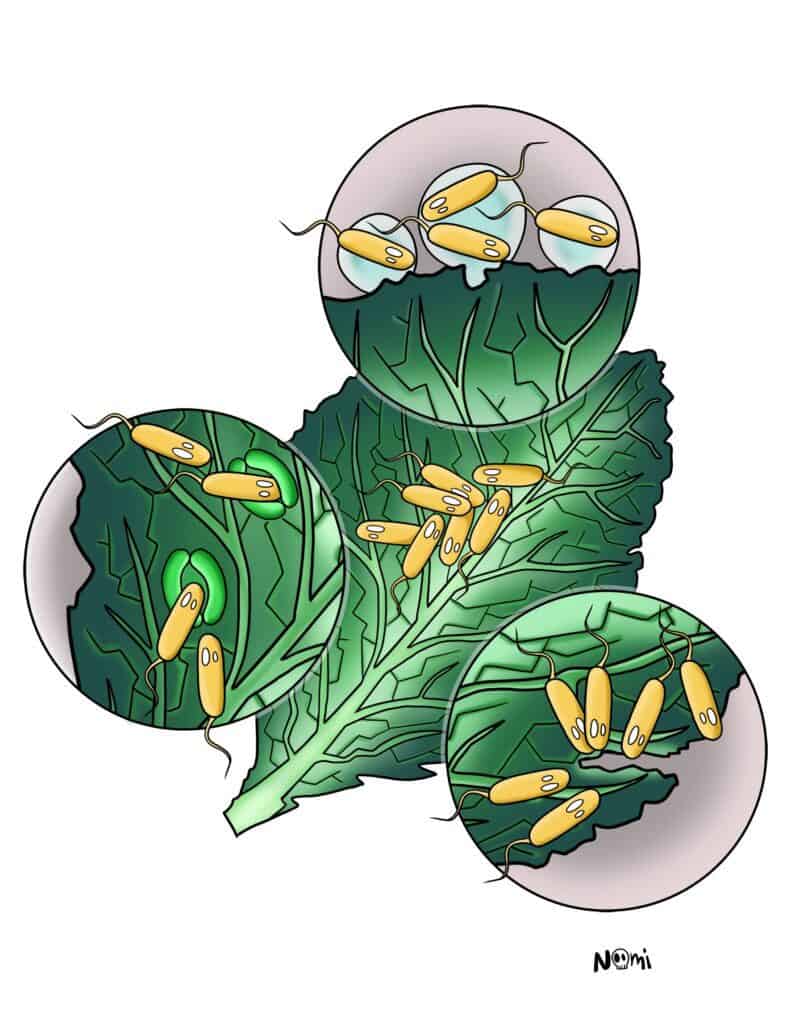
Also, the pigment melanin shields the producing cell from energy-rich sunlight. Many bacteria living in the soil or bacterial spores produce these pigments. Here, melanin absorbs light from a wide range of the light spectrum to protect the inner of the cell. Hence, melanin-producing bacteria, like Vibrio cholerae and Streptomyces bacteria, are brown or black.
Bacterial pigments let electrons flow and save energy
Since bacterial pigments allow electrons to flow, they can also be energy conductors. Hence, some pigments are important components of energy complexes and synthesis machineries.
For example, yellow flavins are pigments involved in cellular metabolism. The main flavin is riboflavin, which you may know as vitamin B12. This essential molecule – produced only by bacteria – allows our bodies to work.
Phenazines are unique bacterial pigments with yellowish-green fluorescent colours. Pyocyanin, exclusively produced by Pseudomonas bacteria, shuttles electrons – and thus energy – during the respiration process. Hence, pyocyanin is essential for Pseudomonas as it keeps the bacteria healthy and alive.
Some biopigments have anti-oxidant effects
Bacterial pigments don’t just help adapt to external environmental conditions like the sunlight. They also guard the inner bacterial cell from stressful situations.
Excess or uncaptured energy or escaped light photons can react with oxygen. This process produces so-called oxygen radicals, which can damage molecules inside the bacterium. Known as oxidative stress, oxygen radicals can even become life-threatening for bacteria.
Carotenoids and xanthomonadins protect bacterial cells from oxidative stress. These pigments transform the free oxygen radicals into harmless molecules. Since carotenoids and their product vitamin A have similar functions in humans, it is only healthy for us to take up a lot of these with our diet.
In the bacterium Gemmatimonas aurantiaca, orange carotenoids also work like sunscreen and oxidative shield. These pigments both give the bacterium its bright orange colour and protect it from too much sunlight.

Bacteria combat microbial enemies with coloured pigments
As night falls, many bacterial pigments reveal their darker sides. They become important weapons for microbial warfare. Without sunlight, several pigments take on roles as virulence factors and antimicrobials as they mess up cells’ energy and oxygen household.
For example, prodigiosin is the red weapon of Serratia marcescens. As prodigiosin inhibits the growth of several bacterial, fungal and insecticidal pathogens, Serratia marcescens is an important biocontrol bacterium of plant disease.
You may have seen prodigiosin-producing Serratia bacteria on contaminated food. They develop these red, blood-like dots.
Violacein is a purple pigment with anti-viral, anti-bacterial and anti-cancer properties. For example, Chromobacterium violaceum sends membrane bubbles filled with violacein to kill bacterial enemies.
Similarly, Janthinobacterium lividum protects frogs and salamanders as it lives on their skins. Here, the bacterium throws violacein at pathogenic fungi that would otherwise infect and harm the animals.
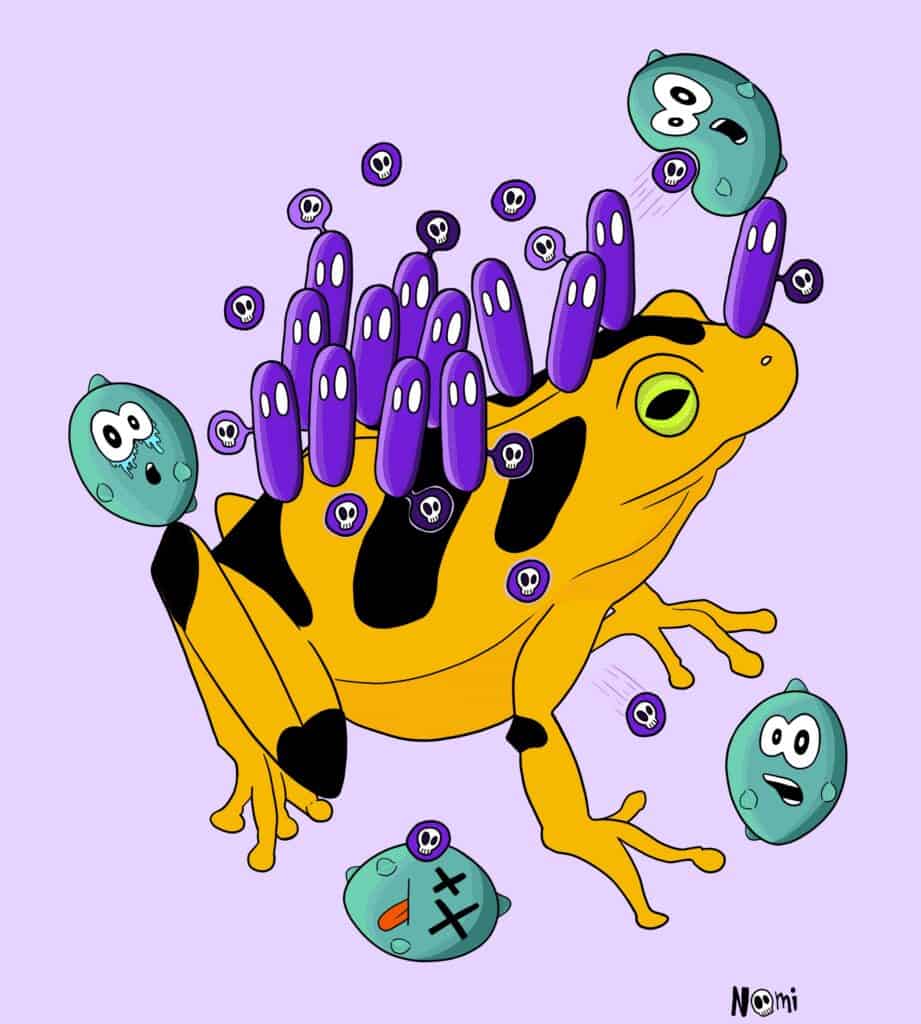
Pyocyanin, the fluorescent electron-shuttling pigment in Pseudomonas, is also very sensitive to oxygen. It even turns Pseudomonas aeruginosa cultures in the lab blueish just by shaking and airing them.
Yet, not all bacteria have an appropriate coping mechanism for pyocyanin. Hence, these bacteria suffer oxidative stress when they come into contact with this pigment. This is why Pseudomonas uses pyocyanin also to fight bacterial and fungal enemies.
Vivid pigments colour the bacterial world
The Bacterial World is colourful – one of this blog’s taglines. You may have asked yourself what this is about and why bacteria have so many different colours.
From the dazzling pink of halophilic microorganisms to the sunny yellow of phytopathogens, bacterial pigments give their producers shiny and vibrant colours. But thanks to the colourful biopigments, bacteria also gain abilities to survive in new and challenging environments.
Some of these bacterial pigments are essential for us humans and even life on Earth. From some of these colourful biopigments, we produce vitamins that we need for our own metabolism. Also, every oxygen molecule that you just took up with your last breath, at some point, was transformed by a bacterial chlorophyll pigment.
So, I guess it is yet again time to be grateful to bacteria and their vibrant and life-enabling activities!

